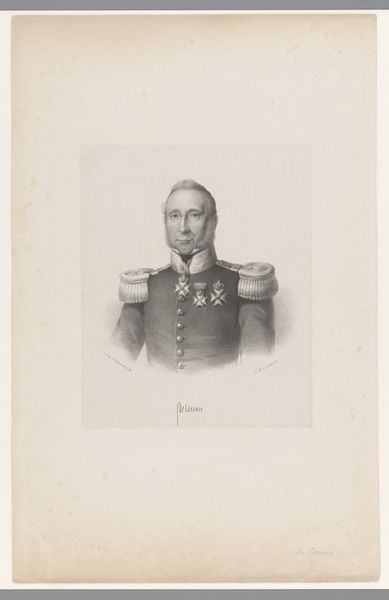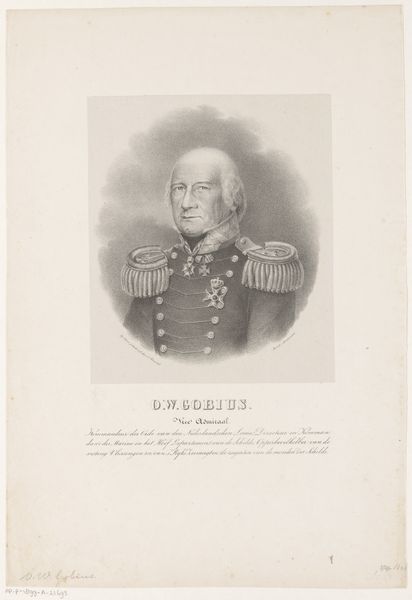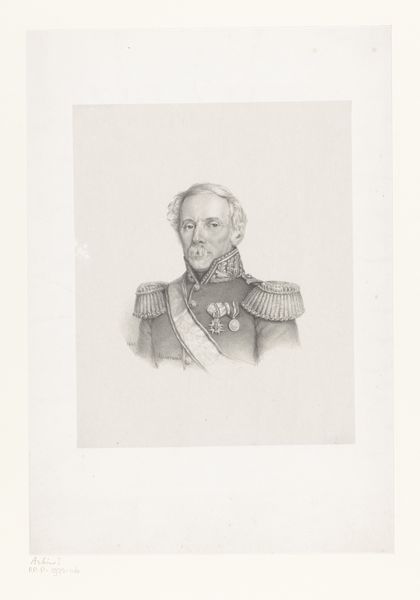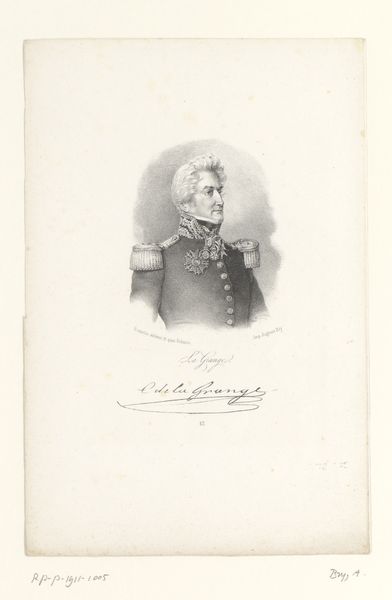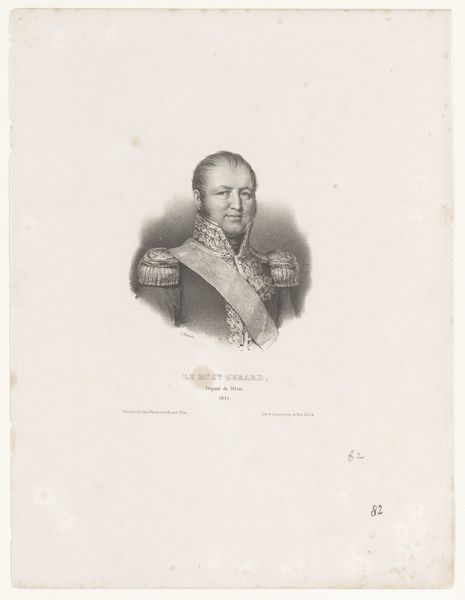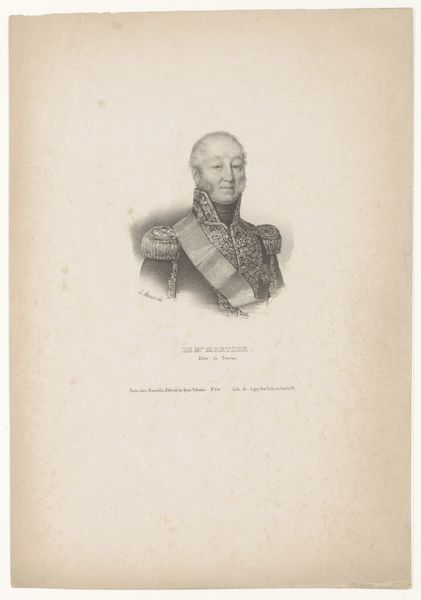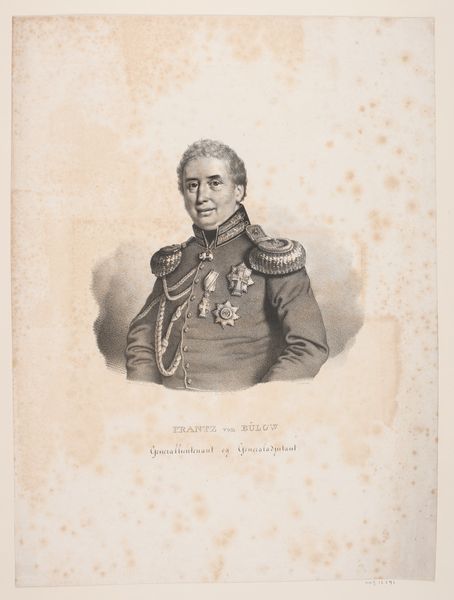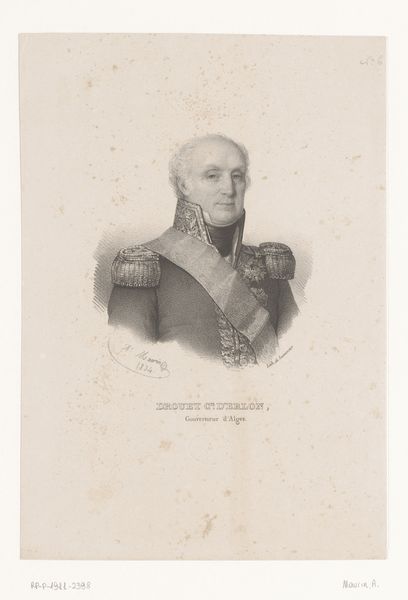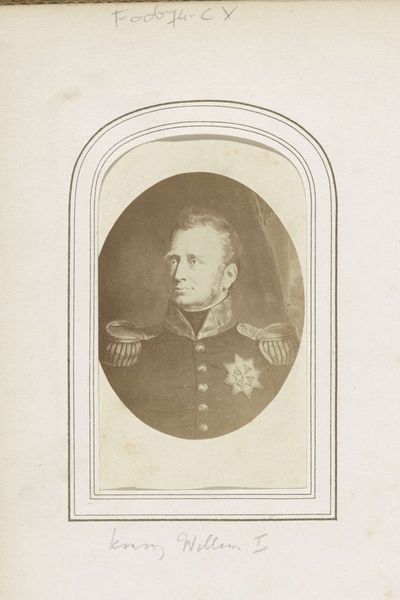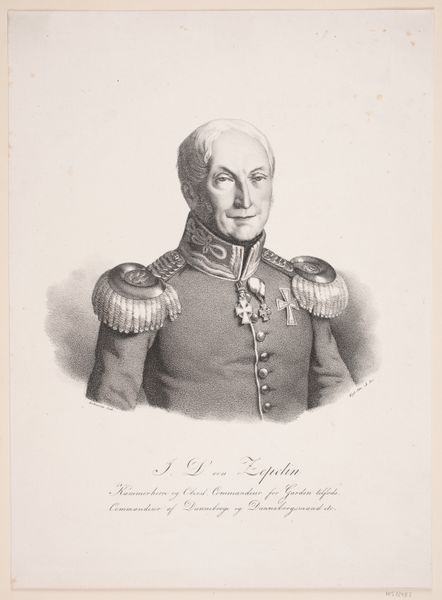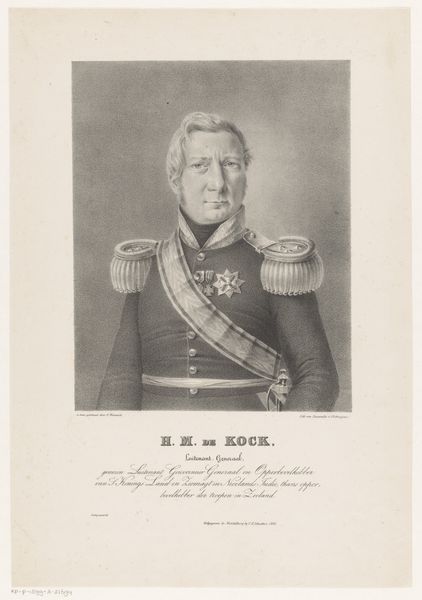
drawing, graphite, engraving
#
portrait
#
pencil drawn
#
drawing
#
graphite
#
academic-art
#
engraving
#
realism
Dimensions: height 504 mm, width 350 mm
Copyright: Rijks Museum: Open Domain
Johan Hendrik Hoffmeister made this portrait of Hendrik Alexander Ruysch sometime in the 19th century, using a technique called lithography. The magic of lithography lies in its reliance on the mutual repulsion of grease and water. The artist would have drawn the image on a flat stone surface using a greasy crayon, then treat the stone so that ink only sticks to the drawing. Paper is then pressed onto the stone to transfer the image. Look closely, and you can see the fine, grainy texture that’s so characteristic of the medium. Lithography democratized image-making in the 19th century. Unlike earlier printmaking methods like engraving, which required specialized skills and tools, lithography was relatively quick and inexpensive, leading to an explosion of printed images in newspapers, books, and advertising. This portrait of Hendrik Alexander Ruysch is an example of how lithography could be used to create affordable, yet dignified, likenesses of individuals, connecting commercial print with the tradition of portraiture. Hoffmeister skillfully exploits the tonal range and textural possibilities of lithography to give us a tangible sense of Ruysch's presence.
Comments
No comments
Be the first to comment and join the conversation on the ultimate creative platform.
